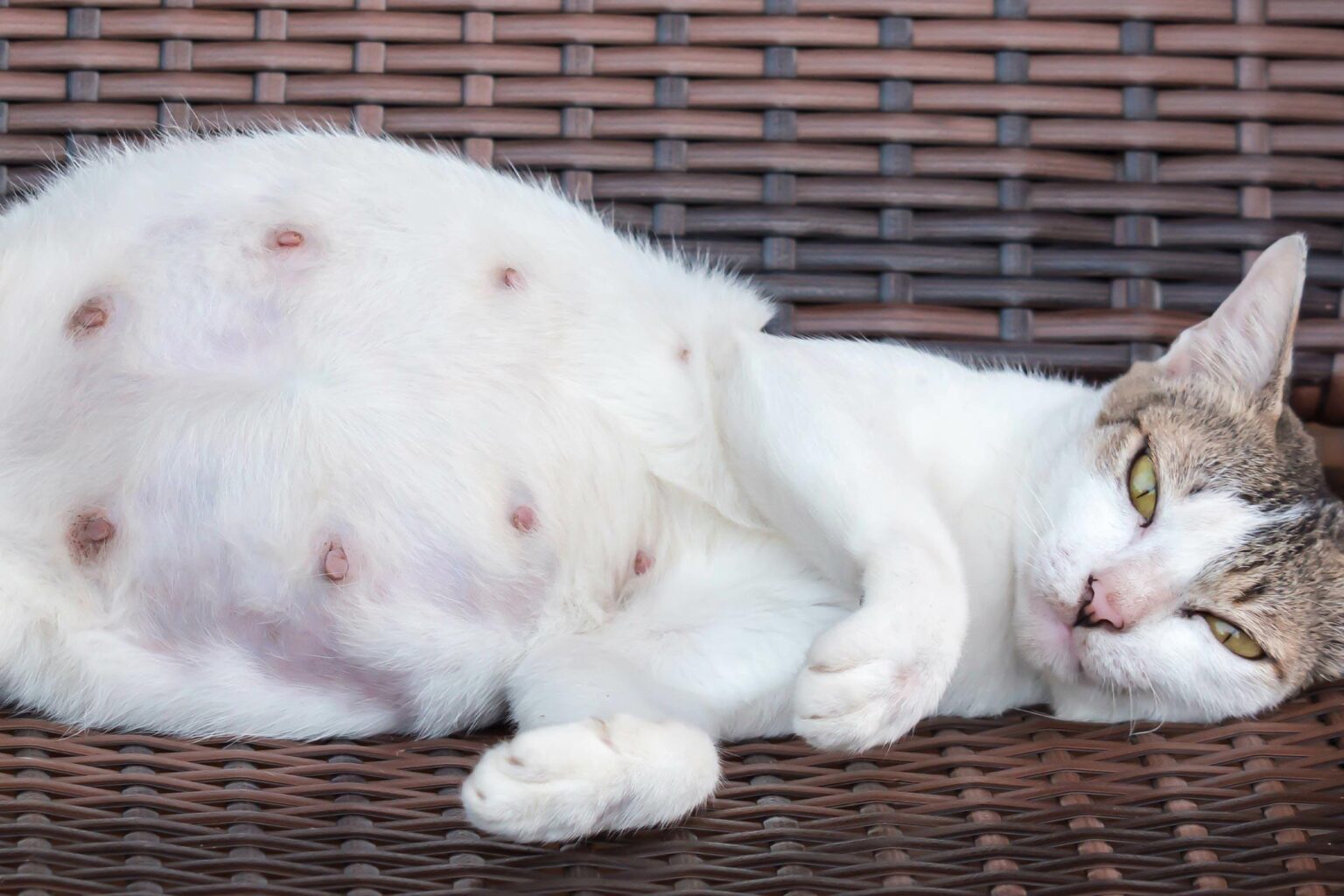When it comes to our feline friends, understanding their reproductive health is crucial for responsible pet ownership. One common question among cat lovers is, “How old does a cat have to be to get pregnant?” This topic is not only important for those considering breeding their cats, but also for anyone who wants to ensure the well-being of their pets and manage the population of stray cats.
In this article, we’ll explore the age at which cats can become pregnant, the signs of feline maturity, and essential facts about their reproductive cycle. Whether you’re a seasoned cat owner or new to the world of whiskers and purrs, this friendly guide aims to equip you with knowledge to make informed decisions about your furry companions. Let’s dive in and uncover the fascinating facts about feline reproduction!
Table of Contents
- Understanding Feline Reproduction and Age Milestones
- Recognizing Signs of Feline Estrus and Readiness to Mate
- Health Considerations for Pregnant Cats and Their Owners
- Best Practices for Responsible Cat Breeding and Adoption
- Q&A
- Key Takeaways
Understanding Feline Reproduction and Age Milestones
Feline reproduction is a fascinating process that begins when cats reach sexual maturity, which can vary based on factors such as breed, health, and environment. Generally, female cats can become pregnant as early as 5 to 12 months of age, with most reaching this milestone around 6 months. Male cats also mature at a similar age; however, their behavior may not show signs of readiness until around 7 to 12 months. Once reached, these milestones mark the beginning of their reproductive cycle, which is characterized by specific phases, including estrus, ovulation, and gestation. Understanding these phases aids in proper care and management of your feline friend during this period.
As part of their reproductive cycle, female cats typically go into heat multiple times per year, often during the spring and summer months. This seasonality means that if not spayed, a single female can have up to three litters annually. Each litter can average approximately 3 to 5 kittens, emphasizing the importance of responsible pet ownership. Below is a simple table summarizing key age milestones for feline reproduction:
| Age Milestone | Description |
|---|---|
| 5-12 Months | Onset of sexual maturity for females. |
| 6-12 Months | Males typically reach maturity, showing mating behaviors. |
| 3-5 Litters/Year | Potential number of litters for an unspayed female. |
Recognizing Signs of Feline Estrus and Readiness to Mate
Recognizing when your cat is in heat can be essential for pet owners who are not planning to breed. During this period, which typically occurs every few weeks in unspayed females, you may notice several distinctive behaviors and physical signs. Cats may become more affectionate, vocalize loudly, or even attempt to escape the home in search of a mate. Additionally, a cat in estrus will often exhibit a posture known as lordosis, where she raises her hindquarters and moves her tail to the side, signaling her readiness to mate. Understanding these signs can help you manage your pet’s behavior and prevent unwanted litters.
It’s also important to monitor changes in your cat’s grooming habits and appetite. While some cats may eat less during this phase, others might increase their food intake due to heightened energy levels. You may observe the following signs:
Heightened Vocalization: Increased yowling or meowing.
Excessive Affection: Seeking out human companionship more frequently.
Marking Behavior: More frequent urination or spraying to mark territory.
By being attentive to these behaviors, you can better understand your cat’s reproductive cycle and take necessary precautions to ensure her health and well-being throughout this time.
Health Considerations for Pregnant Cats and Their Owners
When a cat becomes pregnant, her health and well-being become crucial not just for her, but also for her owners. It’s essential for pet parents to provide a balanced diet, regular veterinary check-ups, and a stress-free environment. Pregnant cats require additional nutrients, so consider transitioning to a high-quality, nutrient-rich diet formulated for feline pregnancy. Here are some important health tips:
Regular Vet Visits: Schedule check-ups to monitor the health of the mother and her kittens.
Nutrition: Ensure she’s eating a high-calorie diet that’s rich in protein and essential vitamins.
Safe Space: Create a quiet, comfortable area for her to rest and prepare for birthing.
Owners should also be aware of potential health risks associated with pregnancy. Infections, parasites, and other complications can pose serious threats to both the mother and her kittens. It’s crucial to recognize signs of distress or illness, such as lethargy, decreased appetite, or unusual behavior. Understanding the common issues that can arise during this period helps in taking prompt action. Here’s a simple table summarizing key signs to watch for:
| Signs of Distress | Possible Issues |
|---|---|
| Lethargy | Potential infections |
| Decreased Appetite | Nutritional deficiencies or illness |
| Vomiting | Gastrointestinal issues |
Best Practices for Responsible Cat Breeding and Adoption
Responsible cat breeding and adoption are critical in ensuring the health and well-being of both the feline population and potential pet owners. Breeders should prioritize the genetic health of their cats by conducting thorough health screenings and selecting breeding pairs with desirable traits. Understanding the importance of age is also vital, as female cats can become pregnant as early as six months old. This makes it essential for breeders to have a plan in place for managing the breeding process responsibly, including appropriate age restrictions and a commitment to socializing kittens before they are placed in homes.
For potential cat adopters, choosing a responsible breeder can make all the difference. Look for breeders who offer clear documentation of health checks and genetic backgrounds, and who are willing to engage with you about their breeding philosophy. Additionally, consider adopting from shelters where many cats are in need of loving homes. Here are some key points to ensure a responsible adoption:
- Ask about the cat’s history and temperament.
- Inquire about any vaccinations or medical history.
- Make sure to meet the cat in person before making a decision.
- Check for the adoption organization’s policies on returns or support.
| Criteria | Responsible Breeder | Shelter Adoption |
|---|---|---|
| Health Checks | Conducted | May vary |
| Cost | Higher (due to breeding) | Lower (adoption fees) |
| Support | High (breeder guidance) | Medium (shelter support) |
| Variety | Limited to specific breeds | Wide range of mixed breeds |
Q&A
Q&A: How Old Does a Cat Have to Be to Get Pregnant? Feline Facts to Know
Q: At what age can a female cat become pregnant?
A: A female cat can become pregnant as early as five months old. However, the average age for a cat to go into her first heat cycle, known as estrus, is around six months. This is when she can become pregnant if she mates.
Q: Can male cats father kittens at the same age?
A: Yes! Male cats can begin to father kittens as early as six months old as well. They reach sexual maturity around this age and can impregnate females during their heat cycles.
Q: Are there any factors that influence a cat’s ability to breed?
A: Yes, several factors can influence a cat’s ability to breed, including breed, health, nutrition, and environmental conditions. Some breeds may reach maturity earlier or later than others. A well-nourished and healthy cat is more likely to go into heat at the appropriate age.
Q: What are the signs that a female cat is in heat?
A: Signs of a female cat in heat include increased vocalization, restlessness, affectionate behavior, and a tendency to assume a mating position, known as lordosis, when petted. She may also try to escape the house to find a mate.
Q: How often do cats go into heat?
A: Female cats can go into heat several times a year, typically every two to three weeks during the breeding season. This can be influenced by the length of daylight and can vary based on geographic location.
Q: What are the risks of letting a young cat have kittens?
A: Allowing a young cat to have kittens poses several risks, including health complications during pregnancy and birth, as well as the stress of caring for kittens. Younger cats may not be physically or emotionally prepared for motherhood.
Q: What should I do if I don’t want my cat to get pregnant?
A: The best way to prevent unwanted pregnancies is to spay your female cat. Spaying not only prevents pregnancy but also reduces the risk of certain health issues, such as uterine infections and cancers. It’s generally recommended to spay cats before their first heat cycle, which is around six months of age.
Q: Can a cat become pregnant if she is spayed?
A: No, a cat that has been properly spayed cannot become pregnant. Spaying involves the surgical removal of the ovaries and uterus, eliminating the possibility of pregnancy.
Q: What is the average number of kittens in a litter?
A: The average litter size for a cat is between three to five kittens. However, a cat can have anywhere from one to as many as twelve kittens in a single litter, depending on various factors including her health and breed.
Q: Why is it important to educate myself about cat reproduction?
A: Understanding cat reproduction is crucial for responsible pet ownership. It helps prevent unwanted litters, reduces the number of homeless animals, and allows you to provide better care for your feline friends. Educating yourself enables you to make informed decisions about spaying, neutering, and general feline health.
If you have more questions about your feline friends or their reproductive health, don’t hesitate to reach out to a veterinarian for personalized advice!
Key Takeaways
understanding the reproductive timeline of your feline friend is crucial for responsible pet care. As we’ve explored, most cats can become pregnant as early as five months old, which underscores the importance of spaying or neutering to prevent unwanted litters and promote a healthier life for your pet. Being informed about your cat’s reproductive health not only helps in making the best decisions for their care but also contributes to the overall well-being of the feline population. Whether you’re a seasoned cat owner or a new pet parent, knowing these facts will empower you to provide the best environment for your furry companion. Remember, a little knowledge goes a long way in ensuring happy and healthy lives for both cats and their owners. Thank you for joining us on this exploration of feline reproductive facts, and we hope you feel more equipped to care for your beloved pets!
















